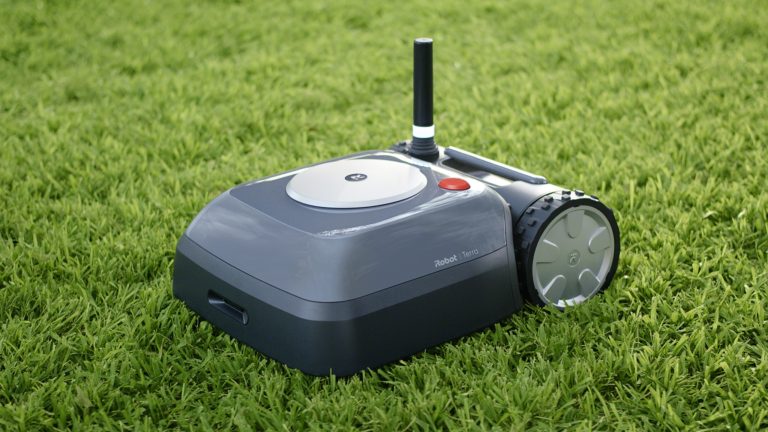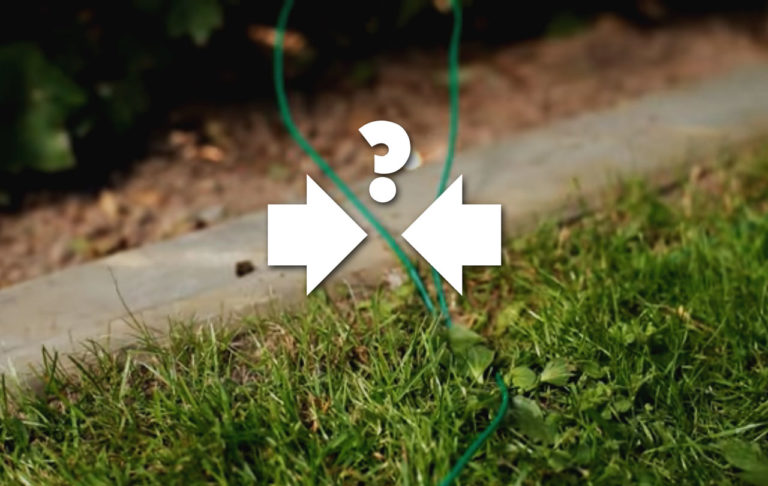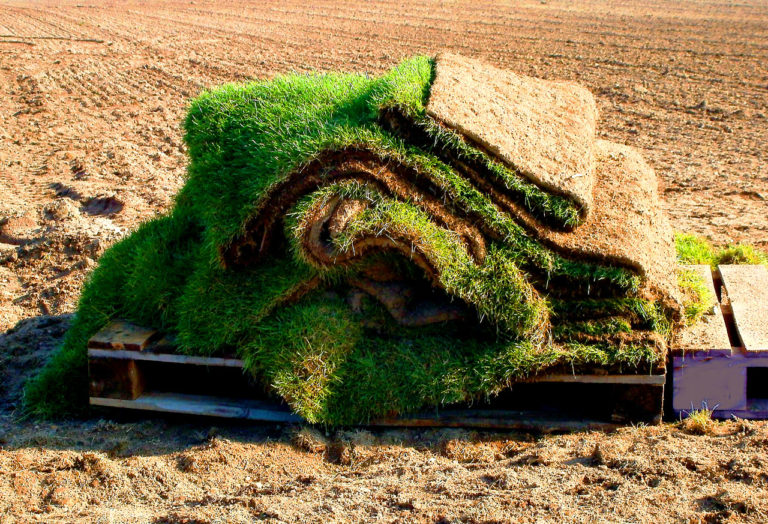When you bought a new robotic mower, you must have been thrilled to see how it mows your lawn so well while remaining so quiet. But after a while, a robotic mower can start getting louder, which can be for a variety of reasons. The good news is that it’s often not too difficult to get the robot to quiet down again. That is what this article is all about.
How do you make your robotic mower quiet again? If your robotic mower has suddenly become louder, in most cases it’s due to a problem with the mowing unit, such as a mistake made when changing the blades, or even excessive dirt buildup. In the case of robotic mowers with blade discs, you should especially need to ensure the two blades have not accidentally been screwed together at the same hole.
There are many other possible causes, but these are the most common. In this article we will work our way from the more common to the most specific causes. There are also some problems which are specific to certain models. I try to keep this article up to date, so if you have a problem that’s not listed here, or suggestions for solutions yourself, feel free to write them in the comments below.
Contents
How do you make your robotic mower quieter?
There are several reasons why you would want to make your robotic mower quieter, so I will divide the subject into two sub-topics.
- The robotic mower has not necessarily become louder, but you are simply looking for ways to make to your mower even quieter
- The robotic mower actually has become louder over time and you now want to make it as quiet as it was originally
To make the robotic mower quieter, there are various options available to you. For example, you can install what’s called a “sliding plate.” This will quiet the mower regardless of what the problem is.
You can also install sharper blades to reduce mowing noise. There are special titanium blades for robotic mowers that are more durable than the standard blades and don’t get dull as quickly.
When the mower blades become too dull, the grass is plucked from the ground more than it is cut, causing the mowing noise to become louder. So it is all the more important that the blades are always sharp. Not only should you use sharper and more durable blades to keep noise down, changing the blades often will help, too. In this article I have gone into more detail about how often you should change the blades.
Last but not least, regular cleaning of the robotic mower is also important. You should clean your mower roughly every two weeks, which usually takes less than 10 minutes. This helps keep the volume down, because it prevents too much dirt from building up on the blades and frame and making noise.
In addition, various problems can cause your mowing robot to be noisier than normal, such as an imbalance in the blade discs or wear of the ball bearing in the mowing motor. I will discuss these problems further below.
In brief: These are the approaches you can take to decrease the volume of your mower:
- Installation of a sliding plate (not available for all models)
- Use of sharper and more durable blades (titanium blades)
- Regular replacement of the blades
- Regular cleaning of the robotic mower
- Fixing technical issues that increase mowing noise
In the following sections I will go into more detail about each of these options.
Approaches to make your robotic mower quieter
A sliding plate reduces the noise of the mowing unit
Sliding plates reduce the noise your robotic mower makes when mowing. A sliding plate is a flat plate that is installed under the actual mowing unit, which the robot will slide on to a certain extent when mowing.
The plate not only makes the mower quieter, but also has a number of other useful side effects. For example, the sliding plate prevents the mower from getting dirty as quickly because it prevents grass clippings or seed pods from getting stuck in the mower, the outer shell, or under the blades.
So with a sliding plate, you don’t have to clean your mower as often, and it will run better overall because it is simply less dirty. Being less dirty, in turn makes the mower quieter. You can also expect a slight improvement in operating times, because the mower does not have to “struggle” as much against caked-on dirt and clippings when mowing.
Unfortunately, sliding plates are not available for all mowing robots, but in any case they are available for most models of HUSQVARNA. Yet, they are not being sold in the US, at least I couldn’t find them anywhere. Here is a seller from Germany that sells them on eBay, just to give you an idea of what this is. It seems though they only ship within Europe. If you see these things being sold anywhere in the US, I’d love to here from you where you got them.
Sharper and more durable blades reduce mowing noise
The standard blades that come with mowing robots are not bad, but you can certainly replace them with something better. On the internet you can find more and more “high end” blades with special coatings, such as titanium carbide.
These blades are even sharper than normal blades, which leads to a reduction of the mowing noise. This is because the sharper blade can cut through grass with less resistance (think friction) from the grass, which reduces noise.
In addition, these blades have a greater durability, so they do not become dull as quickly. Aside from constant mowing, various environmental conditions can make blades dull. The right blades, however, have a certain resistance to acids and bases and are particularly resistant to corrosion.
These blades here on Amazon are an example of such blades for robotic mowers with blade discs (note that there are also mowing robots with star blades). They have a special titanium coating that makes them last longer.
Regular replacement of the blades reduces the mowing noise
No matter which blades you use, you should replace them regularly. With particularly durable blades, such as the C-blades just mentioned, this has to be done less frequently than with “cheap” blades. Exactly how often you need to replace the blades is hard to say, as it depends on many factors, such as the type of grass in your lawn and its growth rate.
In this article I’ve written, you can read more about how often you should replace the blades. Sharp blades are essential for quiet mowing, as the lawn is cut properly and not plucked.
And not only that, it is of course better for your lawn. If you pay attention to the sharpness of the blades, you will get a much better cut and a healthier lawn. Pretty much no blades will last longer than 3 months (for models with blade discs), and many will have to be replaced even more often.
Regular cleaning ensures less noise
Regular cleaning of the robotic mower ensures lower noise levels in the short and long term. Dirt and grass residues, as well as other objects that can get into the mowing unit or in the framework, cause the robotic mower to make more noise while mowing.
If the mower unit is so clogged with dirt and clippings that it drags all of the lawn cuttings along when mowing, this will of course make it louder. Lawn seeds that get wedged in the mower are also problematic. In addition, stuck grass can also lead to slight imbalances in the mower deck, which then will become louder as a result.
In the long term, the robotic mower also wears out faster if it is not cleaned regularly. Signs of aging, which in turn can cause noise problems- such as a corroded bearing in the mower motor- will then set in more quickly.
Therefore you should clean your robotic mower regularly. It is sufficient to do a simple cleaning every one or two weeks. This does not take longer than 10 minutes. Once a year you can also do an intensive, complete cleaning.
Problems that make the robotic mower louder
If you keep all these things in mind and your robotic mower is still too loud, there may be other reasons why this is happening. Here I will go deeper into some common problems, which I will be updating as time goes on.
Imbalance due to accidentally attaching two blades together
Mowing robots with blade discs utilize three small blades that are individually screwed to the blade disc. These are then pressed outwards by the centrifugal force during mowing.
If two blades are accidentally screwed onto a single blade hole, the weight of the blade disc is no longer evenly distributed. The imbalance then produces a clearly audible, loud noise when mowing.
You might think it’s pretty hard to “accidentally” screw two blades in on top of each other. But, like new paper bills fresh from the ATM, the blades can sometimes stick together when first removed from the packaging, so that you end up screwing two blades together without noticing it.
If the mower makes a strangely loud noise, you should always check again whether there is really only one blade per blade hole, and correct it if there is an issue.
Loose blades produce a rattling noise
This point also applies to robotic mowers with a blade disc. Although the idea with the blade disc is that the blades can move freely and swing outwards during mowing, this does not mean that the screws that hold the blades in place do not have to be tightened all the way.
This is a common mistake that happens to new robotic mower owners when changing blades. You can go ahead and tighten the screws completely and the blades should still be able to swing freely.
If you do not tighten the screws enough, the blades will sit loosely. This can also lead to a rattling noise when mowing. In the worst case, the head of the screw can even be cut off, which will cause the blade to come loose and cause an imbalance, leading to additional unpleasant noises.
Noise generated by the sliding plate
Above I mentioned that a sliding plate reduces the noise of the mower deck, but under certain circumstances this can also lead to a certain amount of noise.
If your robotic mower has a sliding plate, you may have noticed that it sometimes hums a little when mowing. This is especially true when the grass is relatively tall. In this case the sliding plate does not turn as fast as the mower deck, because there is too much grass in the way, slowing it down.
There are three holes in the sliding plate. If the sliding plate rotates slower than the mower deck, turbulence occurs at the holes as the blades “rush past”, creating a noise that can be heard as a humming sound.
The holes can easily be closed with tape. The best way to do this is to use a strong and robust fabric tape such as duct tape or plumber’s tape.
I found a video that shows how to do this. It’s in German but you’ll get it from just watching it (it’s super simple).
After some time the ball bearing of the motor can wear out
Sooner or later the ball bearing underneath the motor of your robotic mower can wear out. How long this will take depends very much on the care and use of the mowing robot. For some people this never happens during their lifetime.
However, if your mowing robot makes a very rough and loud engine noise while mowing, it could be because the ball bearing underneath the mowing motor is already heavily worn or corroded.
If you are not sure which engine in the robotic mower is causing the noise, pay attention to how the noise changes when the robotic mower switches off its mowing unit. It does this, for example, when it returns to the charging station or drives to a remote starting point.
Clattering noise due to loose blade disc
On robotic mowers with a blade disc, it is possible that the blade disc is not properly fixed to the mower. This can lead to extra noise, which is usually expressed as a rattling noise. This problem occurs especially with larger robotic mowers.
The solution is, of course, to attach the blade disc correctly.
Again I couldn’t find video in English that shows this and had to fall back to a German one. But again, you simply have to watch what the guy is doing. If something is unclear, just ask me in the comments below this post 😉
If you have a different model of robotic mower with a sliding plate, it will probably work similarly. If you don’t think you can do this repair, then you should ask a dealer of your brand.
The outer shell can begin to rattle after a while
Some users have also reported that after some time, the shell of their robotic mower began to rattle because it started to come loose. The reason for this was always a wear on the front shocks.
To see if they are worn out, you just have to remove the shell and test the front of the shocks to see how much resistance they give. If they can be pushed in pretty easily, then they are too worn.
This can happen, for example, if your robotic mower runs into obstacles frequently. If you have this problem, you will probably also need to contact your dealer. If you are lucky, you might still have a warranty, otherwise you will probably have to pay for a replacement.
Related questions
How loud are robotic mowers? The various models of robotic mowers differ greatly in their volume. While the quietest mowing robots only reach 55 dB, which is about the hum of a refrigerator, there are also mowing robots that reach 75 dB, which is a little louder than a vacuum cleaner.
Also interesting: How loud are robotic mowers?
Are robotic mowers allowed to mow at night? There is no general ban on night-time operation for robotic mowers. In theory, you can run your robotic mower at any time you like. However, some municipalities or neighborhoods have noise ordinances in effect past a certain time of night, so make sure you check with your local laws first.





